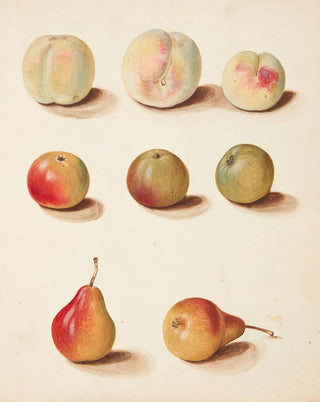Art print | Study of the fishing layer and the meadow - Johanna Fosie


View from behind

Frame (optional)
Reproduction of "Étude de la couche de pêche et du pré" by Johanna Fosie is a window into a world where nature and art meet in delicate harmony. This piece, both simple and profound, evokes a scene from everyday life, where the landscape bears witness to the gestures of men and women interacting with it. Gazing at this work, one is instantly transported to an universe imbued with serenity, where each brushstroke seems to tell a story. Light plays a crucial role, illuminating colors and shapes, while the composition invites contemplation. This art print allows appreciation of the finesse of details and the richness of tonalities, offering an immersive experience for those wishing to enrich their living space.
Style and uniqueness of the work
In "Étude de la couche de pêche et du pré," Johanna Fosie develops a style that is uniquely her own, blending realism and impressionism. The shades of green and blue blend with rare delicacy, creating a soothing atmosphere. The depiction of characters, though stylized, exudes palpable humanity, and their interaction with the landscape is imbued with subtle poetry. The technique of layering paint allows for unprecedented depth in the scene, where each element finds its place in a harmonious balance. The work stands out for its ability to capture a fleeting moment, a breath of nature, while leaving a lasting impression on the viewer's mind. This singularity, both technical and emotional, makes this piece a true masterpiece that transcends time and space.
The artist and her influence
Johanna Fosie is an artist whose journey is marked by an relentless quest for authenticity and beauty. Trained at the finest art schools, she has forged a style that is uniquely hers, inspired by masters of the past while incorporating contemporary elements. Her work reflects a keen sensitivity to the nuances of daily life, where each scene becomes a celebration of nature and human relationships. The influence of impressionism is palpable, but

Matte finish

View from behind

Frame (optional)
Reproduction of "Étude de la couche de pêche et du pré" by Johanna Fosie is a window into a world where nature and art meet in delicate harmony. This piece, both simple and profound, evokes a scene from everyday life, where the landscape bears witness to the gestures of men and women interacting with it. Gazing at this work, one is instantly transported to an universe imbued with serenity, where each brushstroke seems to tell a story. Light plays a crucial role, illuminating colors and shapes, while the composition invites contemplation. This art print allows appreciation of the finesse of details and the richness of tonalities, offering an immersive experience for those wishing to enrich their living space.
Style and uniqueness of the work
In "Étude de la couche de pêche et du pré," Johanna Fosie develops a style that is uniquely her own, blending realism and impressionism. The shades of green and blue blend with rare delicacy, creating a soothing atmosphere. The depiction of characters, though stylized, exudes palpable humanity, and their interaction with the landscape is imbued with subtle poetry. The technique of layering paint allows for unprecedented depth in the scene, where each element finds its place in a harmonious balance. The work stands out for its ability to capture a fleeting moment, a breath of nature, while leaving a lasting impression on the viewer's mind. This singularity, both technical and emotional, makes this piece a true masterpiece that transcends time and space.
The artist and her influence
Johanna Fosie is an artist whose journey is marked by an relentless quest for authenticity and beauty. Trained at the finest art schools, she has forged a style that is uniquely hers, inspired by masters of the past while incorporating contemporary elements. Her work reflects a keen sensitivity to the nuances of daily life, where each scene becomes a celebration of nature and human relationships. The influence of impressionism is palpable, but






